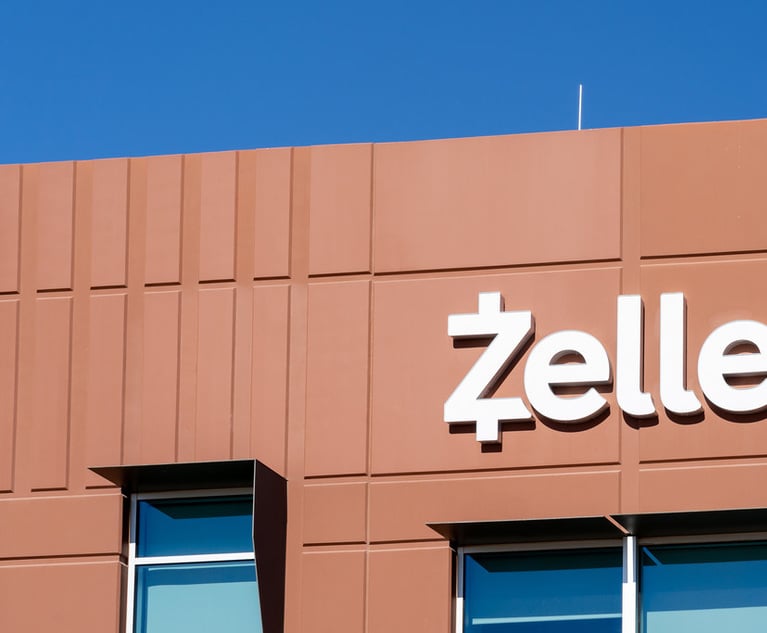Recording Restrictions
Cartoon Network ruling limits copyright owners' rights, protects cable and online businesses.
November 30, 2008 at 07:00 PM
16 minute read
To read about the Copyright Office's proposed rules regarding buffer copies, click here.
—
In March 2006, Cablevision announced a brand new service for its cable TV subscribers. With just a few clicks of their remote controls, customers would be able to record TV programs and watch them later, at their convenience.
OK, that may not seem new. People have been recording TV programs for decades, using VCRs and, more recently, DVRs (digital video recorders).
Cablevision's service, however, would record TV shows in a new way. Instead of recording the programs on a machine located in the customer's home, Cablevision would record the shows miles away, on its own servers. Each customer would have his own recordings, which would be streamed to the customer's TV after he hits the appropriate buttons on the remote.
Cablevision, which is owned by CSC Holdings Inc., expected to roll out its new service in June 2006. But that didn't happen because some TV and movie companies–including Disney, NBC and Universal–sued the company for copyright infringement.
In Cartoon Network v. CSC Holdings, Inc., a Federal District Court in New York found Cablevision liable in March 2007, ruling its system would directly infringe the copyrights in the recorded programs. The court enjoined Cablevision from offering the service.
The 2nd Circuit, however, reversed in August. A three-judge panel ruled that Cablevision's planned service did not directly infringe the plaintiffs' works.
“It is a terrifically important case,” says Paul Goldstein, who teaches copyright law at Stanford Law School. By limiting the rights of copyright owners, the ruling protects many burgeoning online businesses, as well as computer and consumer technology firms.
Had the decision gone the other way, “it would have had a very negative effect on innovation,” says David Sohn, senior policy counsel for the Center for Democracy & Technology, a public interest organization that submitted an amicus brief in the case.
The Beta Test
 |
At first glance, there is something peculiar about this litigation. The usual allegations of infringement are missing.
Observers might expect that aggrieved copyright owners would sue Cablevision for secondary copyright infringement. But the plaintiffs here made no such claims. They sued only for direct infringement.
The likely reason, according to many experts, is that the plaintiffs were trying to get around the Supreme Court's seminal ruling in Sony Corp. v. Universal City Studios, Inc.
In that 1984 decision, the court held that individuals did not commit infringement when they used their Betamax VCRs to record TV programs and play them back at their convenience. Such time-shifting was protected under the fair use doctrine.
The court went on to hold that Sony, the manufacturer of the Betamax, was not liable for secondary infringement because its product was capable of substantial noninfringing
uses (such as allowing users to time-shift TV programs). Even if some customers used the Betamax to make infringing copies, this was not sufficient to make Sony a contributory or vicarious infringer, the court ruled. The technology at issue in Sony wasn't as advanced as that in Cablevision's Remote Storage DVR service (RS-DVR), but the two are functionally similar. “What users would do here is no different from what they were doing with VCRs,” Sohn says. “So in this particular case, there is already a pretty clear holding that what they would do [with the RS-DVR] is fair use.”
Because the RS-DVR would have substantial noninfringing uses (time-shifting), Cablevision could not be liable for secondary infringement under Sony. That's why the plaintiffs here didn't want to allege secondary liability, according to many experts. “The secondary liability issue would be a slam dunk,” says Sherwin Siy, attorney for Public Knowledge, a public interest organization.
Copy Conundrum
Instead of alleging secondary liability, the TV and movie companies claimed Cablevision's RS-DVR would directly infringe by making unauthorized
copies of their works when it recorded the show. The 2nd Circuit, however, held that a party can be liable for direct infringement only if its “volitional conduct” created the copy. And in this case, Cablevision's
customers, not Cablevision, would be the ones consciously choosing to record the programs. Cablevision's system would merely–and automatically–carry out the customers' instructions.
The court concluded that Cablevision could not be directly liable for these RS-DVR recordings any more than Sony could be directly liable for the recordings Betamax users made.
“In the case of a VCR, it seems clear … that the operator of the VCR, the person who actually presses the button to make the recording, supplies the necessary element of volition, not the person who manufactures … the machine,” the court said. “We do not believe that an RS-DVR customer is sufficiently distinguishable from a VCR user to impose liability as a direct infringer on a different party for copies that are made automatically upon that customer's command.”
Cablevision's RS-DVR, however, also would make certain copies without instructions from customers. A series of buffers would record all content
sent to Cablevision for retransmission
to its customers. If a customer requested to record any of this content, the data would be copied from the buffer onto a server's hard drive. The TV and movie companies alleged that the buffer copies directly infringed their works. The 2nd Circuit held
otherwise. The court ruled that, under the Copyright Act, these buffer copies were not actually copies.
Limiting Risk
The Copyright Act defines “copies” as “material objects … in which a work is fixed.” The statute goes on to state that a work is “fixed” in a tangible medium only if this embodiment lasts “for a period of more than transitory duration.”
The buffer copies at issue existed no more than 1.2 seconds. Such temporary reproductions, the court held, were too fleeting to be considered “copies” under the Copyright Act.
This ruling is of major importance to both technology companies and online businesses. “Virtually any kind of digital device involves some kind of temporary storage of data,” Sohn says. “Any products with computing power will make brief copies as a technical consequence of their operation.”
If ephemeral buffer copies could be infringing, businesses that make digital devices or provide digital services would face huge new legal risks. And this would have chilled technological innovation, according to many experts. Similarly, the 2nd Circuit's ruling on volitional conduct gives a boost to the growing trend of cloud computing (providing word processing, e-mail and other functions on remote online servers, rather than on people's desktops). By holding that a company is not a direct infringer unless it volitionally decides to make a copy, the decision decreases the risk that companies offering these new services will be held liable for infringing content posted by their customers.
Still, online and technology companies may not want to get too complacent. The 2nd Circuit's ruling establishes a strong precedent, but it is unlikely to be the last word on the subject. “This ruling just starts things off,” warns Ian Saffer, a partner at Townsend, Townsend and Crew. “We'll see if other circuits follow suit.”
To read about the Copyright Office's proposed rules regarding buffer copies, click here.
—
In March 2006, Cablevision announced a brand new service for its cable TV subscribers. With just a few clicks of their remote controls, customers would be able to record TV programs and watch them later, at their convenience.
OK, that may not seem new. People have been recording TV programs for decades, using VCRs and, more recently, DVRs (digital video recorders).
Cablevision's service, however, would record TV shows in a new way. Instead of recording the programs on a machine located in the customer's home, Cablevision would record the shows miles away, on its own servers. Each customer would have his own recordings, which would be streamed to the customer's TV after he hits the appropriate buttons on the remote.
Cablevision, which is owned by
In Cartoon Network v.
The 2nd Circuit, however, reversed in August. A three-judge panel ruled that Cablevision's planned service did not directly infringe the plaintiffs' works.
“It is a terrifically important case,” says Paul Goldstein, who teaches copyright law at
Had the decision gone the other way, “it would have had a very negative effect on innovation,” says David Sohn, senior policy counsel for the Center for Democracy & Technology, a public interest organization that submitted an amicus brief in the case.
The Beta Test
This content has been archived. It is available through our partners, LexisNexis® and Bloomberg Law.
To view this content, please continue to their sites.
Not a Lexis Subscriber?
Subscribe Now
Not a Bloomberg Law Subscriber?
Subscribe Now
NOT FOR REPRINT
© 2024 ALM Global, LLC, All Rights Reserved. Request academic re-use from www.copyright.com. All other uses, submit a request to [email protected]. For more information visit Asset & Logo Licensing.
You Might Like
View All

Coinbase Hit With Antitrust Suit That Seeks to Change How Crypto Exchanges Operate
3 minute read
Baker Botts' Biopharma Client Sues Former In-House Attorney, Others Alleging Extortion Scheme
Trending Stories
- 1The Key Moves in the Reshuffling German Legal Market as 2025 Dawns
- 2Social Media Celebrities Clash in $100M Lawsuit
- 3Federal Judge Sets 2026 Admiralty Bench Trial in Baltimore Bridge Collapse Litigation
- 4Trump Media Accuses Purchaser Rep of Extortion, Harassment After Merger
- 5Judge Slashes $2M in Punitive Damages in Sober-Living Harassment Case
Who Got The Work
Michael G. Bongiorno, Andrew Scott Dulberg and Elizabeth E. Driscoll from Wilmer Cutler Pickering Hale and Dorr have stepped in to represent Symbotic Inc., an A.I.-enabled technology platform that focuses on increasing supply chain efficiency, and other defendants in a pending shareholder derivative lawsuit. The case, filed Oct. 2 in Massachusetts District Court by the Brown Law Firm on behalf of Stephen Austen, accuses certain officers and directors of misleading investors in regard to Symbotic's potential for margin growth by failing to disclose that the company was not equipped to timely deploy its systems or manage expenses through project delays. The case, assigned to U.S. District Judge Nathaniel M. Gorton, is 1:24-cv-12522, Austen v. Cohen et al.
Who Got The Work
Edmund Polubinski and Marie Killmond of Davis Polk & Wardwell have entered appearances for data platform software development company MongoDB and other defendants in a pending shareholder derivative lawsuit. The action, filed Oct. 7 in New York Southern District Court by the Brown Law Firm, accuses the company's directors and/or officers of falsely expressing confidence in the company’s restructuring of its sales incentive plan and downplaying the severity of decreases in its upfront commitments. The case is 1:24-cv-07594, Roy v. Ittycheria et al.
Who Got The Work
Amy O. Bruchs and Kurt F. Ellison of Michael Best & Friedrich have entered appearances for Epic Systems Corp. in a pending employment discrimination lawsuit. The suit was filed Sept. 7 in Wisconsin Western District Court by Levine Eisberner LLC and Siri & Glimstad on behalf of a project manager who claims that he was wrongfully terminated after applying for a religious exemption to the defendant's COVID-19 vaccine mandate. The case, assigned to U.S. Magistrate Judge Anita Marie Boor, is 3:24-cv-00630, Secker, Nathan v. Epic Systems Corporation.
Who Got The Work
David X. Sullivan, Thomas J. Finn and Gregory A. Hall from McCarter & English have entered appearances for Sunrun Installation Services in a pending civil rights lawsuit. The complaint was filed Sept. 4 in Connecticut District Court by attorney Robert M. Berke on behalf of former employee George Edward Steins, who was arrested and charged with employing an unregistered home improvement salesperson. The complaint alleges that had Sunrun informed the Connecticut Department of Consumer Protection that the plaintiff's employment had ended in 2017 and that he no longer held Sunrun's home improvement contractor license, he would not have been hit with charges, which were dismissed in May 2024. The case, assigned to U.S. District Judge Jeffrey A. Meyer, is 3:24-cv-01423, Steins v. Sunrun, Inc. et al.
Who Got The Work
Greenberg Traurig shareholder Joshua L. Raskin has entered an appearance for boohoo.com UK Ltd. in a pending patent infringement lawsuit. The suit, filed Sept. 3 in Texas Eastern District Court by Rozier Hardt McDonough on behalf of Alto Dynamics, asserts five patents related to an online shopping platform. The case, assigned to U.S. District Judge Rodney Gilstrap, is 2:24-cv-00719, Alto Dynamics, LLC v. boohoo.com UK Limited.
Featured Firms
Law Offices of Gary Martin Hays & Associates, P.C.
(470) 294-1674
Law Offices of Mark E. Salomone
(857) 444-6468
Smith & Hassler
(713) 739-1250







